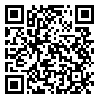1. Sali Z, Narimani M. Prediction of self-injurious behaviors based on early maladaptive schemas and stress coping styles. In: The First National Conference of Farda School [Internet]. Ardabil; 2019. [Persian]
2. Cavelti M, Rinnewitz L, Walter M, Van Der Venne P, Parzer P, Josi J, et al. Psychobiological correlates of aggression in female adolescents with borderline personality disorder. Psychopathology. 2022;55(1):37–48. [
DOI]
3. Goodwin J, Saab MM, Dillon CB, Kilty C, McCarthy A, O'Brien M, et al. The use of film-based interventions in adolescent mental health education: A systematic review. J Psychiatr Res. 2021;137:158–72. [
DOI]
4. Fontana A, Benzi IMA, Cipresso P. Problematic internet use as a moderator between personality dimensions and internalizing and externalizing symptoms in adolescence. Curr Psychol. 2023;42(22):19419–28. [
DOI]
5. Nock MK. Self-Injury. Annu Rev Clin Psychol. 2010;6(1):339–63. [
DOI]
6. Gilbert AC, DeYoung LLA, Barthelemy CM, Jenkins GA, MacPherson HA, Kim KL, et al. The treatment of suicide and self-injurious behaviors in children and adolescents. Curr Treat Options Psychiatry. 2020;7(1):39–52. [
DOI]
7. Hepp J, Carpenter RW, Störkel LM, Schmitz SE, Schmahl C, Niedtfeld I. A systematic review of daily life studies on non-suicidal self-injury based on the four-function model. Clin Psychol Rev. 2020;82:101888. [
DOI]
8. Kiekens G, Hasking P, Nock MK, Boyes M, Kirtley O, Bruffaerts R, et al. Fluctuations in affective states and self-efficacy to resist non-suicidal self-injury as real-time predictors of non-suicidal self-injurious thoughts and behaviors. Front Psychiatry. 2020;11:214. [
DOI]
9. Talebkhah P, Sajjadpour H, Sadeghi G, Jajarmi N. Comparison of general self-efficacy in adolescents with and without self-injurious behavior (case study: Bojnord city). Journal of North Khorasan Disciplinary Knowledge. 2020;7(26):107–21. [Persian]
10. Kiani AR, Ahmadboukani S, Najafi N, Gorji Z. Validation and psychometric properties of the interpersonal needs questionnaire in students. Research in Cognitive and Behavioral Sciences. 2020;9(2):65–78. [Persian] [
Article]
11. Kiani A, Dargahi S, Ahmedbookani S, Esmaeilbeigi Mahani M. The role of attitudes to life in the thwarted belongingness and perceived burdensomeness in veterans. Nurse and Physician within War. 2019;6(21):66–71. [Persian] [
Article]
12. Valinezhad A, Nemattavousi M, Rezabakhsh H, Krasian Mujemnari A, Hovassi Soomer N. The mediating role of interpersonal needs, parent-adolescent conflict in the relationship between parenting styles, basic needs with non-suicidal self-injury, suicidal ideation. Applied Psychology. 2021;15(3):564–37. [Persian] [
Article]
13. Ma J, Batterham PJ, Calear AL, Han J. A systematic review of the predictions of the interpersonal–psychological theory of suicidal behavior. Clin Psychol Rev. 2016;46:34–45. [
DOI]
14. Ribeiro JD, Joiner TE. The interpersonal‐psychological theory of suicidal behavior: current status and future directions. J Clin Psychol. 2009;65(12):1291–9. [
DOI]
15. Amir MB, Ghamari H, Kaiani AR. The effectiveness of acceptance and commitment-based therapy on thwarted belongingness and perceived burdensomeness of addicts. Etiadpajouhi. 2019;13(53):253–68. [Persian] [
Article]
16. Hayes SC. A practical guide to acceptance and commitment therapy. New York: Springer Press; 2004. [
DOI]
17. Esfandiyari Bayat D, Asadpour I, Mohsenzadeh F, Kasaee A. Comparison of the effectiveness of group counselling based on rational, emotional and behavioral therapy (REBT) and acceptance and commitment therapy (ACT) on forgiveness of women affected by marital infidelity. Journal of Psychological Science. 2021;20(97):139–51. [Persian] [
Article]
18. Nieuwsma J, Walser R, Farnsworth J, Drescher K, Meador K, Nash W. Possibilities within Acceptance and Commitment Therapy for Approaching Moral Injury. Current Psychiatry Reviews. 2015;11(3):193–206. [
DOI]
19. Khoramniya S, Taheri A, Mohammadpour M, Foroughi A, Karimzadeh Y. The effectiveness of acceptance and commitment therapy (ACT) on interpersonal sensitivity and psychological flexibility in students with social anxiety: a randomized clinical trial. Shenakht Journal of Psychology and Psychiatry. 2021;8(1):15–27. [Persian]
20. Hapenny JE, Fergus TA. Cognitive fusion, experiential avoidance, and their interactive effect: Examining associations with thwarted belongingness and perceived burdensomeness. J Contextual Behav Sci. 2017;6(1):35–41. [
DOI]
21. Greenberg LS, Goldman RN. Clinical handbook of emotion-focused therapy. Washington, DC: American Psychological Association; 2018.
22. Fathi S, Pouyamanesh J, Ghamari M, Fathi Aghdam Gh. The effectiveness of emotion-based therapy and acceptance & commitment therapy on the pain severity and resistance in women with chronic headaches. Journal of Community Health. 2020;14(4):75–87. [Persian] [
Article]
23. Sanagavi Moharrar G, Shirazi M, Mohammadi R, Maghsoodloo F. Effectiveness of emotional therapy on reducing anxiety and depression in patients with multiple sclerosis. Medical Journal of Mashhad University of Medical Sciences. 2019;61(1):190–200. [Persian] [
Article]
24. Jabari N, Aghili M. The effectiveness of compassion and emotion-focused therapy on self-harming behaviors and interpersonal needs in female adolescents with suicidal ideation. Modern Psychological Researches. 2023;18(69):61–70. [Persian] [
Article]
25. Rahmani S, Bassak Nejad S, Arshadi N, Selby E. The effect of mindful self-compassion therapy on the interpersonal needs among patient with obsessive-compulsive disorder with suicidal thoughts. Knowledge & Research in Applied Psychology. 2022;23(2):90–105. [Persian] [
Article]
26. Miklowitz DJ, Merranko JA, Weintraub MJ, Walshaw PD, Singh MK, Chang KD, et al. Effects of family-focused therapy on suicidal ideation and behavior in youth at high risk for bipolar disorder. J Affect Disord. 2020;275:14–22. [
DOI]
27. Van Orden KA, Cukrowicz KC, Witte TK, Joiner TE. Thwarted belongingness and perceived burdensomeness: construct validity and psychometric properties of the interpersonal needs questionnaire. Psychol Assess. 2012;24(1):197–215. [
DOI]
28. Farahani H, Abedi A, Agha Mohammadi S, Kazemi Z. Practical basics of single case designs in behavioral science and medical research. Tehran: Psychology and Art Publications; 2013. [Persian]





